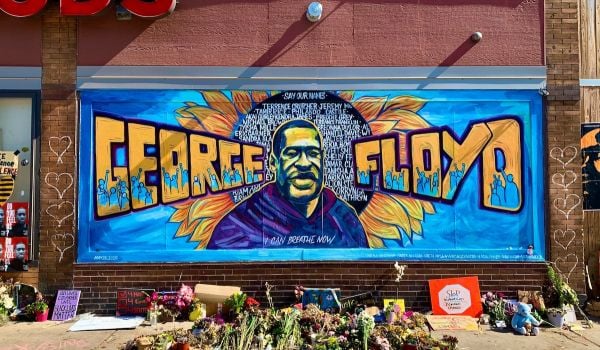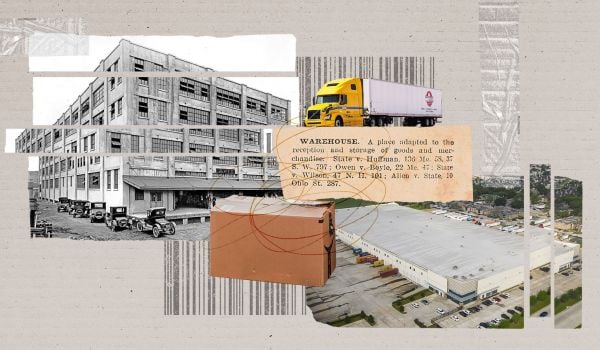One evening last September, at Brooklyn Cooperative Federal Credit Union’s branch in Bed-Stuy, the credit union staff hosted a town hall to walk members through the credit union’s balance sheet — deposits, loans, other investments, capital reserves. CEO Samira Rajan emphasized the credit union’s key ratios, like its net worth ratio — capital reserves to total assets.
“The idea was, as an owner you should have a way of understanding the financial sustainability of your cooperative,” Rajan says. “So if our members were dropped into some credit union meeting on some other planet at least they could raise their hand and ask what is your net worth ratio and be able to know what the significance of that is.”
As part of ensuring a safe banking system, credit unions are required to set aside enough capital reserves to keep their net worth ratio at a minimum of 7 percent. If it falls below 7 percent, regulators can put a limit on deposits per account and force credit union members to withdraw funds, or they can put a temporary hold on new membership. Worst-case scenario, regulators shut down the credit union.
For a small credit union with mostly low-income working-class members, finding extra cash to set aside for capital reserves is a constant struggle. Without some fortuitous planning in 2018, Brooklyn Cooperative would not have been able to add 1,400 new members in 2019, growing from $25 million to $30.4 million in deposits.
“That’s literally insane growth for a financial institution,” Rajan says. “You cannot do that without the capital reserves to support the additional deposits.”
Tucked deep inside New York Governor Andrew Cuomo’s 2020 agenda is a new proposal to provide $25 million over five years to the New York State Community Development Institutions (CDFI) Fund. It’s a state program specifically designed to provide flexible funding to financial institutions like Brooklyn Cooperative to use for capital reserves or loan loss reserves, or for such institutions to offer financial counseling and education for borrowers to get out of debt or start a business. It’s not quite accurate to call it a new program, because technically it was created by legislation in 2008, but it has never been allocated any funding.
While there is still some uncertainty about the exact details of how the NY State CDFI Fund will be administered, and the upcoming budget negotiations could still put the funding on the chopping block, 2020 is already the furthest it has come since some form of the program was first conceived in the mid 1980s.
“It’s been such a lost opportunity,” says NY State Assemblymember Yuh-Line Niou, who started pushing to fund the state CDFI Fund after she first came into office in 2017. “We have to think about all the predatory lending from the past, we also have to look at securing our usury laws now, but we also have to look to the future to asset building and be able to build wealth in communities of color and low-income communities.”
It was 1985 when the National Federation of Community Development Credit Unions (now known as Inclusiv) first drafted legislation to create the “New York Corporation for Community Banking,” which would support credit unions serving low-income and historically redlined communities across New York State. After that proposal (under Governor Mario Cuomo) fell through, the federation started lobbying for a program at the federal level. Those efforts helped lead to what is now the Federal CDFI Fund, housed at the U.S. Treasury. The federation revived its state-level CDFI program campaign in the mid-1990s.
“It’s been a long time coming [for the NY State CDFI Fund], geologic time,” says Clifford Rosenthal, who was president of the federation from 1983-2012.
Created in 1994, the Federal CDFI Fund ended up serving more than just credit unions, making grants also to community banks, loan funds, venture funds and even real estate investment trusts that have a primary mission of serving low-to-moderate income communities. Organizations must first apply for CDFI certification from the U.S. Treasury in order to be eligible for support from the fund. To obtain federal CDFI certification, one of the requirements is to provide at least 60 percent of lending volume to low-to-moderate income communities.
Today there are nearly 1,200 federally certified CDFIs, including 82 in New York. CDFIs across the country have cumulatively received more than $3.4 billion from the Federal CDFI Fund’s main grant programs. Historically, for every grant dollar from the Federal CDFI Fund, each institution has leveraged $10 in other funds — including deposits, grants, and other dollars from foundations or other investors.
In 2018, Brooklyn Cooperative Federal Credit Union got a $1 million federal CDFI Fund grant that helped position it for the massive growth it had in 2019.
“One hundred percent of those dollars went to our capital reserve,” Rajan says. “If not for that grant, we would have been capped out. We would have had to tell people, ‘Sorry, you can’t open an account here right now, maybe try again next year.’”
But over time, the number of federally certified CDFIs and their requests have far outstripped available funding. In a typical year, despite an onerous, multi-month application process, the Federal CDFI Fund receives applications with requested funding that adds up to 2-3 times what it has available to disburse.
Supporters of the New York State CDFI Fund hope that it could fulfill some of those funding requests that don’t get fulfilled at the federal level.
At Inclusiv, membership engagement manager Jules Epstein-Hebert says that the current discussions with state officials haven’t yet reached the stage of figuring out the details about an application process or other administrative questions.
“We’re focused now on making sure funds are appropriated,” Epstein-Hebert says. “But the Federal CDFI Fund is a model we’ll be pointing to in terms of procedures.”
Flexibility will be key, supporters say.
“Someone might want to put in a restriction that these funds can only support certain kinds of loans and that might make it harder for the smaller CDFIs because the community needs are diverse and those CDFIs would be the best determinator of what those loans could be or should be,” Niou says.
Niou is also adamant that the NY State CDFI Fund should be making grants, not loans, to credit unions, community banks and loan funds.
“Sometimes the dollars just need to sit there, they can’t give it back and shouldn’t need to pay it back,” Niou says.
It’s part of how the financial system works. Credit unions and community banks need capital reserves. Loan funds need loan loss reserves.
“You want to have a diversity of types of participants and maybe there’s a place in this world for community financial institutions,” Rajan says. “That alone is worth supporting from a public policy point of view.”
The Business Center for New Americans was founded in 1997 as a loan fund for businesses owned by resettled refugees in New York City, but it now serves any immigrant or woman entrepreneur. Founder and executive director Yanki Tshering says the loan fund’s policy is to set aside one dollar in loan loss reserves for every ten dollars in loans approved. With a $6 million loan portfolio and around 700 borrowers at any given moment, that’s an average loan size of $8,500, meaning $850 in loan loss reserves per loan.
If Tschering’s organization gets a wholesale loan from a big bank or the state, then uses those dollars to make smaller loans to individual businesses, it doesn’t make financial sense to set aside borrowed dollars for loan loss reserves, so they have to get that money from somewhere else. “It can be a struggle finding dollars to set aside for loan loss reserve,” Tshering says.
The Business Center for New Americans was fortunate to win a $1 million grant from the Federal CDFI Fund in 2019, 15 percent of which Tshering says they’re using for operating expenses and the rest they’re using for loans and loan loss reserves.
“We even think there might be ways a New York State CDFI Fund could improve upon the Federal CDFI Fund process,” says Tshering, who also sits on the board of the New York State CDFI Coalition — which helped pass the original 2008 legislation to create the NY State CDFI Fund.
Supporters point to a few recent changes that helped New York get this close to finally funding what is, at least on paper, the first and so far only state-based CDFI Fund in the country.
The NY State CDFI Fund got folded into a broader platform, the NY State Community Equity Agenda, with a coalition of 35 signatory organizations across the state. Most signatories aren’t CDFIs. Instead, they’re groups like Fruit Belt Community Land Trust in Buffalo, City Roots Community Land Trust in Rochester, Chhaya Community Development Corporation in Queens, legal aid and fair housing groups around the state, or New York Working Families, the nonprofit affiliate of the New York Working Families Party. Coordinated by the New Economy Project, a nonprofit advocacy group based in New York City, the coalition formed in advance of the 2018 NY state legislative session.
According to New Economy Project co-director Sarah Ludwig, the Community Equity Agenda coalition focused its attention for the first time on the governor’s office over the past year, drafting long memos about the impact of CDFIs in New York and holding meetings with coalition members and governor’s office staff members in Albany and New York City.
“We walked them through the process of how we’ve seen it work with the CDFI Fund nationally, deploying the funds, how it gets translated at the institution level and how that supports borrowers out in the community,” says Epstein-Hebert at Inclusiv, which also signed onto the Community Equity Agenda.
Niou also believes the broader coalition will be key to the upcoming budget negotiations, to help convince other legislators of the real value of $25 million over five years for the NY State CDFI Fund during a year when New York State is facing a $6 billion budget deficit.
“When you think about a CDFI Fund, even just the name is so wonky, it’s not like people are going to put it on their literature to get elected,” Niou says. “This is really getting in the weeds of how banking systems work, how credit unions work, how we can develop a real mechanism.”
EDITOR’S NOTE: We’ve corrected the name of one of the groups signing on to the NY State Community Equity Agenda.
This article is part of The Bottom Line, a series exploring scalable solutions for problems related to affordability, inclusive economic growth and access to capital. Click here to subscribe to our Bottom Line newsletter.

Oscar is Next City's senior economic justice correspondent. He previously served as Next City’s editor from 2018-2019, and was a Next City Equitable Cities Fellow from 2015-2016. Since 2011, Oscar has covered community development finance, community banking, impact investing, economic development, housing and more for media outlets such as Shelterforce, B Magazine, Impact Alpha and Fast Company.
Follow Oscar .(JavaScript must be enabled to view this email address)


















